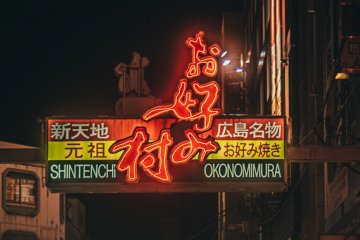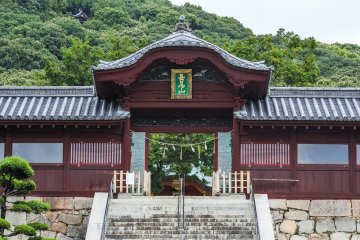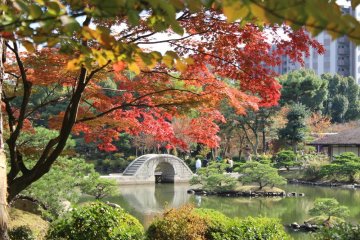
L'Auberge J-Hoppers à Hiroshima
Geraldine BartoliJ-Hoppers, l’une des auberges de jeunesse les moins chères et les plus agréables que vous puissiez trouver à Hiroshima !

La gare d'Hiroshima est une gare de l’arrondissement de Minami-ku, exploitée par la West Japan Railway Company. La gare d'Hiroshima est le terminus de plusieurs lignes et tous les trains Sanyo Shinkansen s'arrêtent ici.
Les arrêts terminaux des lignes de tramway historiques 1, 2, 5 et 6, qui mènent à tous les coins de la ville, sont situés sur le parvis. Le trajet jusqu'au Peace Memorial Park dure environ un quart d'heure avec les lignes 2 et 6.

J-Hoppers, l’une des auberges de jeunesse les moins chères et les plus agréables que vous puissiez trouver à Hiroshima !

Okonomimura est un parc à thème gastronomique dédié aux okonomiyaki d'Hiroshima, plat très répandu au Japon et situé près de l'extrémité est de la rue commerçante Hondōri à Hiroshima. On y trouve 24 restaurants d'okonomiyaki, chacun avec un style et une sélection d'ingrédients légèrement différents L'okonomiyaki est proche du "Issen Yoshoku" ("repas occidental à un centime"), un plat populaire auprès des gens ordinaires pendant l'ère d'avant-guerre. Il se composait d'une pâte de farine cuite avec des oignons, des crevettes séchées et des épices. Après la guerre, d'autres ingrédients tels que le chou, les œufs, les fruits de mer, le sarrasin et les nouilles de blé ont été utilisés pour améliorer l'alimentation en ces temps difficiles. C'est ainsi qu'est né l'okonomiyaki dans la ville d’Hiroshima. [Photo: Victor Lee / CC BY-NC-ND 2.0]

Hiroshima Tōshō-gū (広島東照宮) is a Shinto shrine in Hiroshima which was established in 1648. As with all Tosho-gu shrines in Japan, it enshrines the first Shōgun of the Tokugawa Shogunate, Tokugawa Ieyasu.

Shukkeien Garden, located in central Hiroshima City, is a traditional Japanese-style garden loved by visitors and locals alike. This natural oasis among urban life provides a wonderful setting to slow down and rejuvenate among nature. Shukkeien Garden was completed in 1620 as a private garden for one of Hiroshima’s feudal lords (daimyo) and translates to “shrunken scenery garden” in Japanese. Although the garden was severely damaged in 1945 during WWII, it was completely restored to its former grandeur and is known as a National Place of Scenic Beauty. The Edo-period garden is cleverly landscaped to look like miniature mountains, valleys, rivers, bamboo groves, waterfalls, and forests. In the center of the garden, a carp-filled lake features multiple pockets of land that resemble islands. Plants pruned to look like tiny trees sprout from these islands and decorate the surrounding grounds. The pond’s stillness creates a mesmerizing reflection of the area’s natural hues and organic forms. The scenery shines brightest in springtime when the cherry blossoms are in full bloom, and in autumn when the foliage turns vibrant. The garden also has a small stone statue on its northern side to commemorate the people lost during the atomic bombing in 1945. You can view the expertly crafted scenery from a path around the perimeter of the park or in one of the garden’s many tea houses, which hold tea ceremonies year-round.

The Peace Pagoda, or busshari-tō as it it called in Japanese, was built at the instigation of a Bhuddhist monk named Nichidatsu Fujii. Fuji was the founder of the Nipponzan Myōhōji sect of Nichiren Bhuddhism and was inspired to devote his life to promoting non-violence after a meeting with Mahatma Gandhi. His Peace Pagodas in Hiroshima and Nagasaki were the first of some 80 “shrines to world peace” that can now be found around the world.